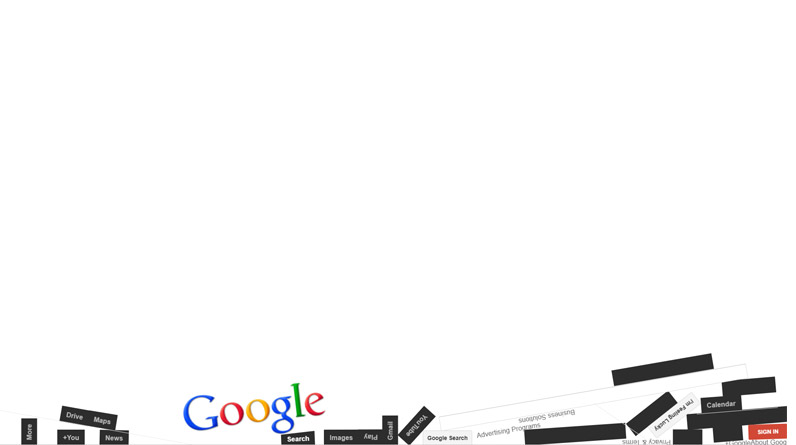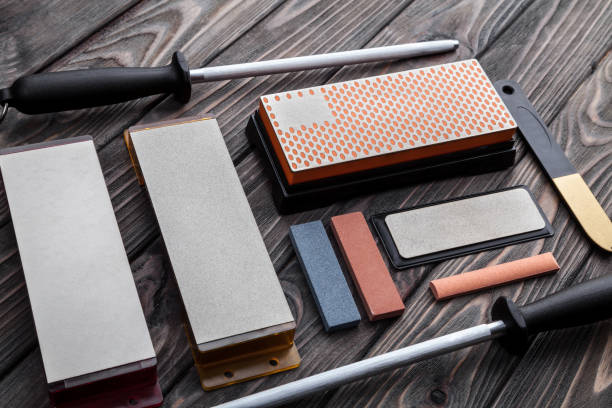In the vast and often serious landscape of the internet, Google has long been known for injecting moments of delightful whimsy. Among its most iconic “Easter eggs” is Google Gravity, a captivating browser trick that defies the very notion of a stable web page. While often dismissed as a mere novelty, a deeper look reveals Google Gravity as a fascinating case study in interactive web design, the evolution of digital play, and the subtle ways technology influences user perception.
What is Google Gravity? The Digital Playground Defined
At its core, Google Gravity is a JavaScript-based visual effect that makes the elements of the Google homepage—the logo, search bar, buttons, and even search results—appear to fall to the bottom of the screen as if under the influence of gravity. Users can then interact with these fallen elements, dragging them, throwing them around, and watching them bounce realistically within the browser window.
This interactive experience originated in 2009, developed by web developer Ricardo Cabello, also known as Mr. Doob. It quickly became a viral sensation, showcasing the unexpected possibilities of web technologies like JavaScript and HTML5.
How to Engage with Google Gravity: The Classic Approach
Accessing Google Gravity typically involves a simple, well-known method, though variations exist:
- Open a JavaScript-Enabled Browser: Ensure your web browser (Chrome, Firefox, Safari, Edge, etc.) has JavaScript enabled, which is usually the default setting.
- Navigate to Google.com: Go to the main Google search page in your browser.
- Type “Google Gravity” and Click “I’m Feeling Lucky”: In the Google search bar, type “google gravity.” Instead of pressing Enter or clicking “Google Search,” locate and click the “I’m Feeling Lucky” button. This button, designed to take users directly to the top search result, is the key to activating the original Mr. Doob version.
- Engage with the Effect: Upon clicking, the page will initially appear normal. However, a slight mouse movement will trigger the effect, causing all elements to “collapse” downwards. You can then use your mouse to drag and toss the individual pieces.
The Nuance of “Official” Google Gravity vs. Fan Creations
Here lies a common point of confusion: Is Google Gravity an official Google product? The answer is nuanced.
- The Original Mr. Doob Version: The “Google Gravity” effect accessed via the “I’m Feeling Lucky” button on Google.com redirects to a page hosted on mrdoob.com. This was a Chrome Experiment – a project showcasing the capabilities of web technologies, often developed by Google engineers or external collaborators like Mr. Doob. While endorsed and promoted by Google as an experiment, it wasn’t a standard, permanent feature integrated directly into the core Google search interface in the same way “Do a Barrel Roll” or “Askew” are.
- elgooG and Mirror Sites: Many other websites, notably those under the “elgooG” (Google spelled backward) umbrella like elgoog.im, host versions of Google Gravity and other Google Easter eggs. These are third-party, fan-made mirror sites that replicate the experience. While they offer the same visual effect, they are not officially run or endorsed by Google Inc. They serve as archives for discontinued or hard-to-access Google tricks.
This distinction is important because the “official” status (or lack thereof for many versions) impacts discussions on mobile compatibility and future developments.
The Mobile Mystery: Decoding Cross-Device Compatibility
Perhaps the most significant point of contention and user frustration regarding Google Gravity is its inconsistent behavior across mobile devices.
- Early Limitations: The original Mr. Doob Google Gravity, designed as a Chrome Experiment for desktop browsers leveraging specific JavaScript functionalities, often exhibited limited or no functionality on early mobile browsers. This led to many reports and articles stating that it “only works on PC or laptop.”
- Evolving Mobile Web: As mobile browsers became more sophisticated and JavaScript execution improved on smartphones and tablets, some articles began to suggest compatibility. The truth is, while the concept of gravity simulations can work on mobile, the specific implementation of the original Mr. Doob experiment might still be clunky or non-functional on certain mobile browsers or if accessed purely via the “I’m Feeling Lucky” trick directly on Google.com’s mobile interface.
- elgooG’s Role in Mobile Access: The third-party “elgooG” sites have often been more proactive in optimizing these “Easter egg” experiences for mobile touch interfaces. When users report “Google Gravity works on my phone,” they are frequently accessing it through one of these optimized mirror sites rather than the direct Google.com -> “I’m Feeling Lucky” route. Some articles even reference dedicated “Google Gravity apps” for iOS/Android, which are almost certainly independent, third-party applications mimicking the effect, not official Google releases.
| Access Method | Original Mr. Doob (mrdoob.com) | elgooG / Mirror Sites (elgoog.im) |
| Desktop Browser | ✅ (Primary Function) | ✅ (Highly Functional) |
| Mobile Browser | ⚠️ (Inconsistent/Limited) | ✅ (Often Optimized) |
| Dedicated Mobile App | ❌ (Not Official) | ✅ (Third-Party Apps Exist) |
Conclusion on Mobile: While the pure “I’m Feeling Lucky” trick from Google.com might be unreliable on mobile, dedicated mirror sites (like elgoog.im) and independent apps have often stepped in to ensure the Google Gravity experience is accessible and optimized for smartphone and tablet users. This explains the conflicting reports: the underlying technology can work on mobile, but the method of access and the specific version encountered determine success.
The Enduring Appeal: More Than Just a Gimmick
Why has Google Gravity maintained its fascination for over a decade?
- Unexpected Delight: It subverts user expectations of a static, predictable search page, creating a moment of genuine surprise and amusement. This break from routine is a powerful psychological draw.
- Interactive Fun: Unlike a static image or animation, Google Gravity is interactive. Users can actively manipulate the elements, transforming a passive viewing experience into an engaging digital playground. This gamification is a key driver of its shareability.
- Accessibility: The trick requires no special software or downloads, just a standard web browser. This low barrier to entry ensures widespread access and ease of sharing among friends and colleagues.
- Showcase of Web Capabilities: For web developers and enthusiasts, Google Gravity serves as an elegant demonstration of what can be achieved with relatively simple JavaScript and physics engines in a browser environment. It inspires creative thinking about interactive web design.
- Symbol of Google’s Playfulness: It reinforces Google’s brand image as innovative, creative, and even a little quirky – a company that doesn’t take itself too seriously. This humanizes a massive tech corporation.
The Science and Art Behind the Digital Fall
The “gravity” in Google Gravity is, of course, simulated physics. It typically relies on JavaScript libraries that implement basic physics engines.
- Key Principles at Play:
- Gravity: A constant downward force applied to all elements.
- Collision Detection: Algorithms detect when elements hit each other or the bottom of the screen.
- Impulse/Bounce: When collisions occur, elements react with a simulated bounce or rebound based on their “mass” and “material.”
- Drag/Friction: As elements slide or are dragged, simulated friction slows them down.
- HTML5 Canvas and CSS3: Modern implementations likely leverage HTML5’s canvas element for smoother rendering and CSS3 transformations for efficient visual effects, though the core logic remains JavaScript-driven.
This playful application of physics can even serve as an impromptu educational tool, demonstrating concepts like force, collision, and rebound in an engaging, visual way.
Beyond the Prank: Implications for User Experience and SEO
While Google Gravity doesn’t directly influence search rankings, its impact on user experience (UX) is notable.
- Enhanced Engagement: For the brief period a user interacts with Google Gravity, their engagement level is significantly higher than a standard search. This burst of interactive fun can lead to positive brand association for Google.
- Memorability: The unique experience makes the Google search page more memorable, potentially fostering a stronger, albeit unconventional, connection with the brand.
- SEO Considerations for Gravity-Inspired Sites: If a website were to adopt similar gravity-like effects for its own content, it would need to:
- Prioritize Accessibility: Ensure the core content remains usable and accessible to all users, including those with disabilities or those who find such effects distracting.
- Optimize Performance: Physics simulations can be resource-intensive. Websites would need to optimize their code to prevent slow loading times or browser crashes.
- Maintain Core Functionality: The primary purpose of the site should not be hindered by the visual effects.
Future Trends: A Glimpse into Gravity-Infused Digital Interfaces?
While a full-fledged “gravity-infused” internet remains firmly in the realm of science fiction, Google Gravity hints at broader trends in user interface design:
- Gamified UX: Incorporating game-like elements into everyday interfaces to boost engagement.
- Physics-Based UI: Using realistic physics to make digital interactions feel more intuitive and natural.
- Augmented Reality (AR) Overlays: Imagine web elements reacting to the real-world gravity detected by a device’s sensors.
- Personalized Digital Environments: Users choosing their preferred level of dynamism or interactivity for their Browse experience.
Google Gravity, then, is not just a relic of early web experimentation but a precursor to how our digital environments might become more dynamic, responsive, and playful in the future.
Conclusion
Google Gravity stands as a testament to the power of creative coding and the unexpected delight of defying digital norms. Far from being a mere fleeting gimmick, it encapsulates how simple JavaScript can transform a utilitarian interface into an interactive playground. Its enduring popularity, the fascinating distinction between official experiments and fan-made mirrors, and the ongoing debate about its cross-device compatibility all contribute to its status as a compelling case study in web development and user engagement. Ultimately, Google Gravity reminds us that even the most functional tools can harbor elements of fun, pushing the boundaries of what we expect from our digital interactions.
Frequently Asked Questions (F.A.Q.s) about Google Gravity
Q1: What is the official status of Google Gravity?
A1: The original Google Gravity accessed via “I’m Feeling Lucky” on Google.com was part of Google’s “Chrome Experiments,” developed by Ricardo Cabello (Mr. Doob) in 2009. While Google promoted it as an experiment, it was never a permanent, core feature directly integrated into the main Google search page interface. Many current versions are hosted on third-party mirror sites like elgoog.im.
Q2: Does Google Gravity work on mobile devices?
A2: Compatibility can be inconsistent. The original Mr. Doob version, when accessed directly via Google.com, might not work reliably on all mobile browsers. However, many third-party mirror sites (like elgoog.im) have optimized their versions of Google Gravity to function well on smartphones and tablets, often utilizing touch interactions. There are also independent mobile apps mimicking the effect, which are not official Google products.
Q3: Who created Google Gravity?
A3: Google Gravity was created by web developer Ricardo Cabello, also known as Mr. Doob, in 2009 as part of the Google Chrome Experiments.
Q4: Does Google Gravity affect SEO or website rankings?
A4: No, engaging with Google Gravity does not directly impact SEO or a website’s ranking in standard Google search results. It is a visual, client-side effect within your browser. However, understanding how interactive elements can influence user engagement is relevant to broader UX and content strategies.
Q5: Can I disable Google Gravity once activated?
A5: You don’t “disable” it in the traditional sense. Since it’s a temporary effect loaded onto a specific page (either Mr. Doob’s site or an elgooG mirror), simply closing the tab or refreshing the page will revert to the standard Google interface.
Q6: Are there any educational benefits to Google Gravity?
A6: Yes, Google Gravity can serve as a fun, informal educational tool. It visually demonstrates basic physics principles like gravity, collision, and rebound in an interactive digital environment, making abstract concepts more tangible.
Q7: Are there other “Easter eggs” like Google Gravity?
A7: Absolutely! Google is famous for its “Easter eggs.” Some popular examples include “Do a Barrel Roll” (spins the page), “Askew” (tilts the page), “Zerg Rush” (allows you to play a mini-game to destroy search results), and playable games like “Pac-Man” and “Atari Breakout” (though some may now be hosted on elgooG sites).



